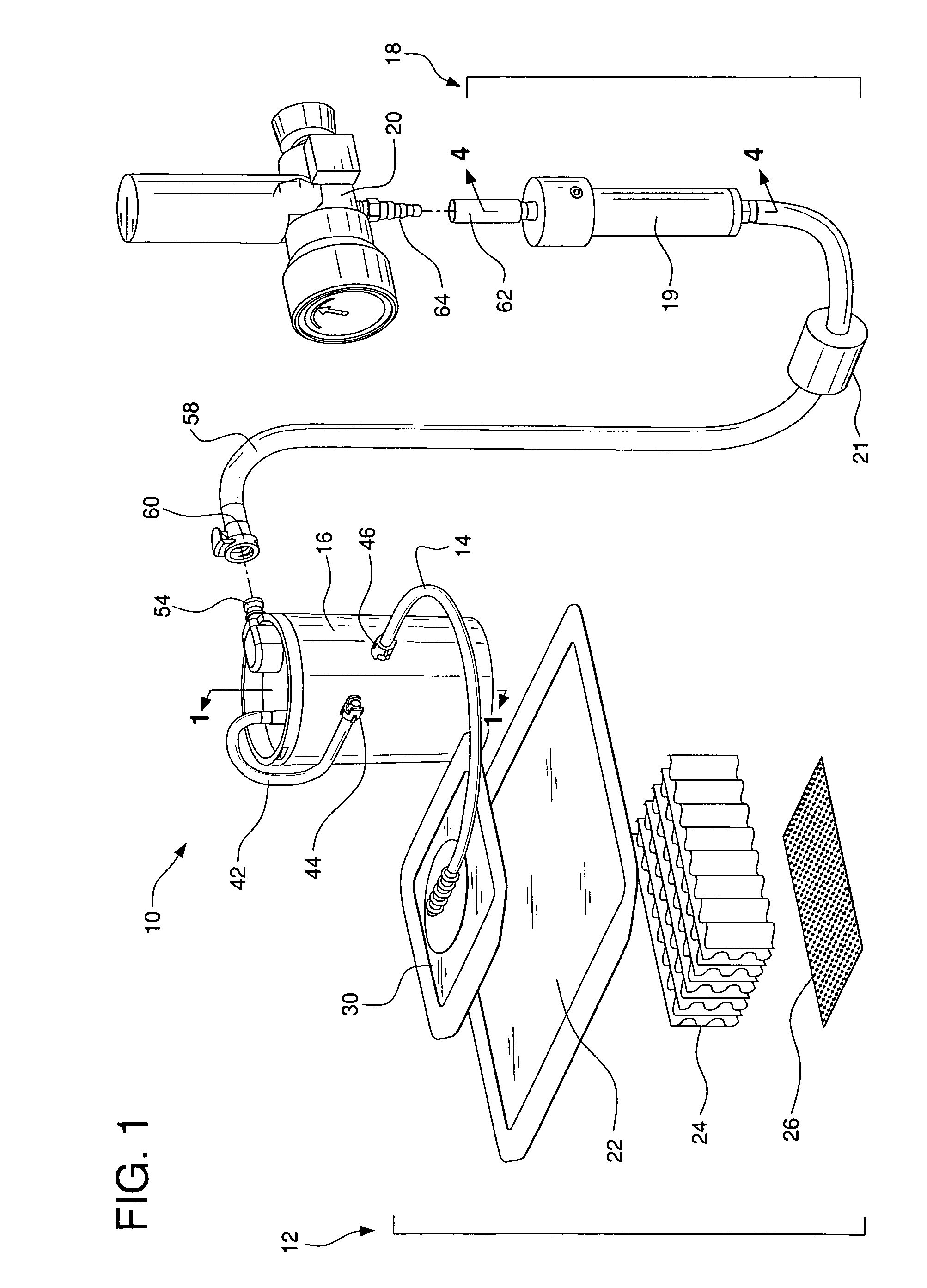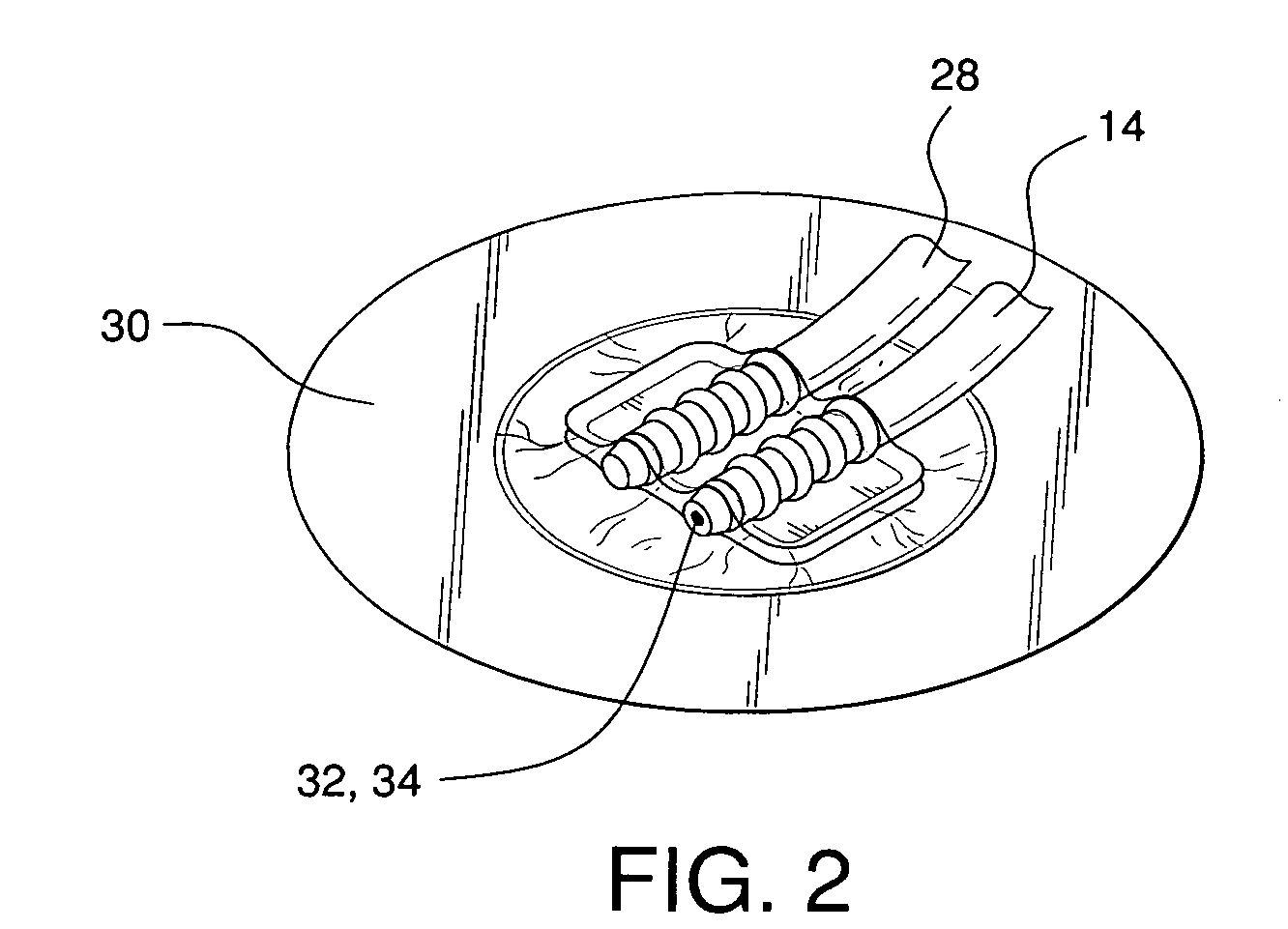System for treating a wound with suction and method of detecting loss of suction
a technology for wounds and suction sources, applied in the field of wound treatment, can solve the problems of practical limitations on the capacity of suction sources, and achieve the effects of reducing the likelihood of blood clotting in the line, preventing overfilling, and reducing the likelihood of reflux of contaminated fluid
- Summary
- Abstract
- Description
- Claims
- Application Information
AI Technical Summary
Benefits of technology
Problems solved by technology
Method used
Image
Examples
Embodiment Construction
[0025]FIG. 1 shows an embodiment of a system (10) for suction wound therapy. The components include a wound dressing subsystem (12), a suction tube (14), a waste collection canister (16), a flow monitor instrument (18) and a wall suction regulator (20) of a stationary suction source.
The Wound Dressing
[0026]The typical wound dressing (12) includes a wound cover (22) and wound packing material (24), and may include a special wound contact layer (26). It will have a suction tube (14) running under the edge of the primary cover or through the cover, or will terminate outside of the cover and communicate with a nozzle or slot in the cover. There is a wide variety of each of these components. The wound dressing (12) shown in the drawings and described herein uses presently preferred components, but the invention is not intended to be limited to these components.
[0027]The primary wound cover (22) is preferably an airtight wound cover that is vapor permeable. It is preferred to use a thin f...
PUM
 Login to View More
Login to View More Abstract
Description
Claims
Application Information
 Login to View More
Login to View More - R&D
- Intellectual Property
- Life Sciences
- Materials
- Tech Scout
- Unparalleled Data Quality
- Higher Quality Content
- 60% Fewer Hallucinations
Browse by: Latest US Patents, China's latest patents, Technical Efficacy Thesaurus, Application Domain, Technology Topic, Popular Technical Reports.
© 2025 PatSnap. All rights reserved.Legal|Privacy policy|Modern Slavery Act Transparency Statement|Sitemap|About US| Contact US: help@patsnap.com



